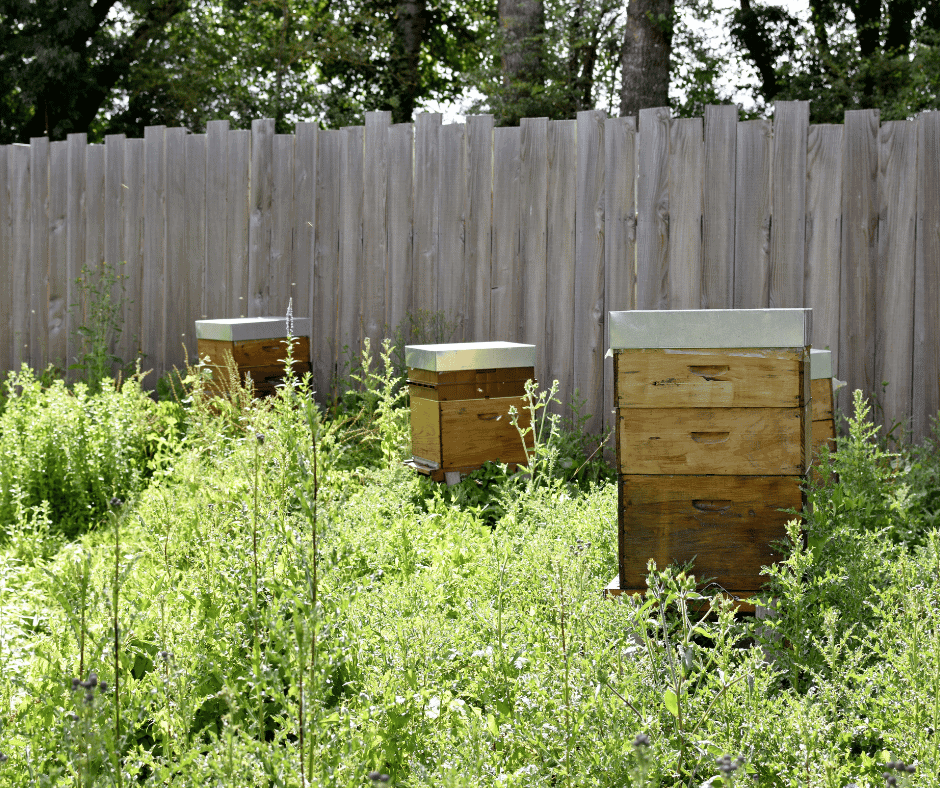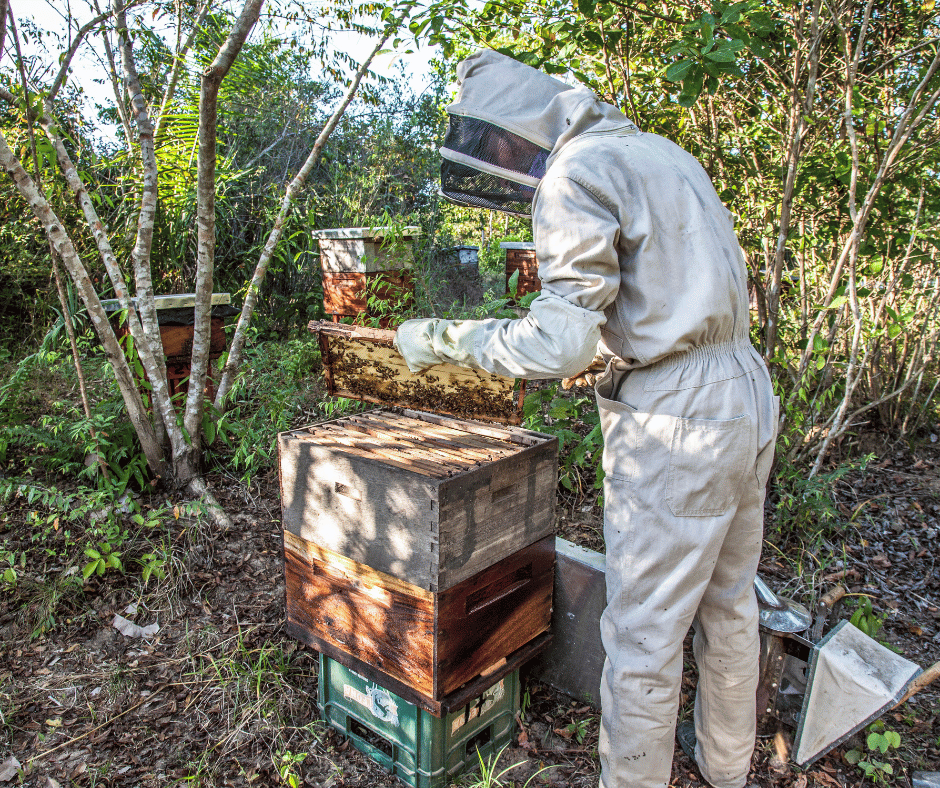
As a professional beekeeper, it is essential to understand the various diseases that can affect your hives and how to spot them. In this blog article, we will provide an overview of common bee maladies, their symptoms, and treatments as well as proactive strategies for maintaining healthy beehives.
We’ll also discuss diagnosing and treating infectious diseases in apiaries so you can ensure your bees remain healthy throughout the season. Read on to learn more about how to spot and treat bee diseases!
Table of Contents
How To Spot Bee Diseases
Beekeeping is an important part of many agricultural operations, and the health of your bees is essential to their success. Unfortunately, bee diseases can be difficult to spot and even more difficult to treat. Knowing how to identify common bee diseases and how best to treat them can help keep your hives healthy and productive.
The first step in spotting a potential disease in your hive is monitoring the behavior of the bees themselves. If you notice that they are not as active or producing less honey than usual, this could indicate a problem with their health. Additionally, if there are dead bees around the entrance or inside the hive itself, this could also signal a potential issue with disease or parasites within the colony.

Another way you can check for signs of illness in your hives is by inspecting them regularly for any physical abnormalities such as discoloration on wings or bodies that may indicate infection from mites or other pests; these should be treated immediately before it spreads further throughout the colony.
Finally, checking for moldy combs which may contain spores from fungi like chalkbrood will help you determine if there’s an underlying fungal infection present within your hive that needs treatment right away too!
Once you have identified any potential issues with the disease within your colonies it’s time to take action! The most effective way of treating bee diseases depends on what type it is; some require antibiotics while others need special treatments like formic acid vaporization (for mite infestations) or oxalic acid (for chalkbrood).
It’s important that whatever method you use follows all safety protocols so make sure to read up on proper application techniques beforehand!
Additionally, make sure not to mix different treatments together as this could cause adverse reactions between chemicals which would only worsen existing problems instead of solving them – always consult experts when unsure about anything related too!
Finally don’t forget about prevention: keeping good hygiene practices around hives such as regular cleaning out old wax combs & debris will go far towards preventing future infections from occurring again down line – plus it’s much easier than trying to cure something after its already taken hold so do yourself favor invest little extra effort now save lot trouble later!
Identifying Common Bee Diseases: A Guide for Professional Beekeepers
As a professional beekeeper, it is important to be aware of the common diseases that can affect your bees. Identifying and treating these diseases early on can help prevent them from spreading and causing more harm to your hive.
Here is a guide for professional beekeepers on how to spot and treat some of the most common bee diseases.
American Foulbrood (AFB)
This is one of the most serious bacterial infections in honeybees, caused by Paenibacillus larvae spores which are spread through contact with infected hives or contaminated equipment. Symptoms include sunken cappings, discolored brood cells, foul-smelling larval remains, and an increase in dead pupae near the entrance of the hive. Treatment involves burning all affected combs as well as any contaminated equipment used in handling them; this will help stop further contamination from occurring within other colonies or apiaries.
Here are some signs that may indicate the presence of American foulbrood in a bee colony:
- Sunken, perforated, or discolored brood cappings: American foulbrood-infected larvae often have sunken or punctured cappings, or they may be discolored, appearing dark and greasy.
- Roped or dried-out larvae: When a larva dies from American foulbrood, it may dry out and turn into a hard, rope-like substance that can be stretched between two fingers.
- Foul odor: American foulbrood-infected hives often have a distinct odor that is described as sour or rotten.
- Uneven brood pattern: American foulbrood can cause an uneven pattern of brood in a colony, with some frames having few or no capped cells while others have too many.
- Pupal remains: Dead pupae infected with American foulbrood may have a melted or perforated appearance, and may be stuck to the bottom of their cell.
If you suspect that your bee colony has American foulbrood, it’s important to contact a beekeeping expert or local agriculture authority to confirm the diagnosis and discuss treatment options.
Video on Identifying American Foul Brood
Chalkbrood Disease
This is another fungal infection affecting honeybee larvae caused by Ascosphaera apis spores found naturally in soil particles around hives; it affects both adult bees and their offspring alike but usually only causes mild symptoms such as discolored brood cells with white patches on their surface or grayish-white mummies inside those same cells when opened up for inspection. To reduce its spread among hives, keepers should practice good hygiene habits like wearing protective clothing while working with colonies; they should also remove any dead pupae they find during inspections so that other healthy ones don’t become infected too easily either way!
Here are some signs and symptoms to look for to identify Chalkbrood disease in bees:
- White, chalky brood: Infected larvae will turn white and chalky in appearance. They may also appear mummified and hard.
- Irregular brood pattern: Chalkbrood disease can cause a spotty brood pattern, with infected cells mixed in with healthy cells.
- Dead or dying larvae: If you notice dead or dying larvae in the hive, it could be a sign of Chalkbrood disease.
- Reduced colony strength: Chalkbrood disease can weaken colonies, leading to reduced honey production and overall hive strength.
If you suspect your bees have Chalkbrood disease, it’s important to take action. The disease can spread quickly and cause significant damage to your hive. Contact a local beekeeping expert or extension office for advice on how to manage the disease.
Video on What is Chalkbrood – How to Identify and Manage Chalk Brood
Nosema Disease
Here is yet another fungal infection commonly found among honeybees due mainly to poor nutrition or overcrowding conditions within their environment – symptoms may include diarrhea-like excrement outside entrances leading into colonies along with reduced worker activity levels inside those same areas due largely because workers have difficulty digesting food properly anymore! The best way to combat this problem? Make sure you provide plenty of fresh pollen sources throughout each season so that there’s enough nutrition available for everyone living there! Additionally, try to split large populations into smaller groups if possible since overcrowded conditions could lead back towards nosema again over time…
The disease is characterized by several symptoms, including:
- Dysentery: Bees infected with Nosema disease will often defecate outside the hive, leaving yellow or brown streaks on the front of the hive.
- Reduced population: Infected bees tend to have shorter lifespans and may die prematurely, leading to a decrease in the size of the hive population.
- Reduced honey production: Nosema disease can also reduce the amount of honey produced by the hive.
- Decreased activity: Bees infected with Nosema disease may be less active than healthy bees, which can make it more difficult for them to forage for food and perform other hive duties.
- Deformed wings: Bees infected with Nosema disease may have deformed wings, which can make it difficult for them to fly and forage for food.
To identify Nosema disease in bees, you may want to observe the symptoms listed above. You can also take a sample of bees from the hive and examine them under a microscope to look for spores of the Nosema parasite. Additionally, there are commercial test kits available that can help diagnose the disease. If you suspect that your bees are infected with Nosema disease, it’s important to take steps to treat the hive and prevent the spread of the disease to other colonies.
Video on Nosema Infection – Practical Identification and Treatment
Understanding the Symptoms and Treatment of Bee Maladies
As beekeepers, it is important to understand the symptoms and treatment of bee maladies. Bees are susceptible to a variety of diseases, parasites, and pests that can cause them harm or even death if left untreated. By understanding the signs and symptoms of these illnesses, you can take action quickly in order to protect your hive from further damage.
The most common symptom among bees is dysentery – a condition caused by bacteria that results in diarrhea-like excrement being expelled from their bodies. This often leads to dehydration as well as weight loss due to a lack of nutrition intake.
Other signs include lethargy or sluggishness; decreased activity levels; difficulty flying; discolored wings; deformed abdomens; dead larvae on the bottom board or within cells in the comb structure; foul odors coming from inside the hive itself and an overall decrease in honey production.
In order to treat any type of bee illness effectively, it is essential for beekeepers to identify what kind they are dealing with first before taking any steps toward treating it properly.
Common treatments for bacterial infections include antibiotics such as tetracycline hydrochloride while fungal infections may require topical applications like fungicides or formic acid treatments applied directly onto affected areas within hives themselves.
In some cases where viruses have been identified as causing disease outbreaks amongst colonies then more drastic measures may need to be taken such as complete destruction/removal/relocation depending on severity level determined by the apiarist’s inspection findings at the time discovery was made.
How to Protect Your Bees from Disease Outbreaks
As a beekeeper, it is essential to be aware of the potential for disease outbreaks in your hives. While bees are generally hardy creatures, they can still succumb to various diseases and parasites if not properly protected. To ensure that your bees remain healthy and productive, there are several steps you can take to protect them from disease outbreaks.
As we have pointed out, the first step is monitoring the health of your hive on a regular basis. Check for signs of distress such as decreased activity or an unusually high number of dead bees around the entrance of the hive.
In addition to monitoring their health regularly, it’s also important to practice good hygiene when handling your hives and equipment by wearing protective clothing such as gloves and veils when working with them. This will help prevent cross-contamination between different colonies which could lead to diseases spreading quickly throughout all hives in close proximity.
Another way you can protect against disease outbreaks is by providing adequate nutrition for your bees through pollen supplements during times when natural sources may be scarce due to weather conditions or other factors.
A balanced diet helps keep their immune systems strong so that they’re better able to fight off infections should one arise.
Additionally, make sure that water sources near the hive are clean as contaminated water has been linked with some types of bee diseases like foulbrood.
Finally, always buy new queens from reputable breeders who have tested their stock for common viruses like American Foulbrood (AFB) before selling them off.
By following these simple tips, you’ll be well on your way toward keeping both yourself and those precious pollinators safe from harm!
Diagnosing and Treating Infectious Diseases in Apiaries

Diagnosing and treating infectious diseases in apiaries is essential to maintain healthy bee populations. Beekeepers must be aware of the signs and symptoms of common bee diseases, such as American foulbrood (AFB), European foulbrood (EFB), chalkbrood, nosema, tracheal mites, and varroa mites.
For example, AFB affects young larvae while EFB affects older larvae; both can be caused by poor nutrition or sanitation practices within an apiary. Additionally, some diseases are more prevalent during certain times of the year due to changes in temperature or humidity levels which can affect bee health.
Once a diagnosis has been made it is important for beekeepers to implement appropriate treatment methods for each individual case based on its severity and cause.
Common treatments include antibiotics for bacterial infections like AFB or EFB; antifungals for fungal infections like chalkbrood; probiotics for gut-related issues like nosema; miticides against parasitic infestations such as tracheal mites or varroa mites; nutritional supplements when poor nutrition has been identified as a contributing factor; and improved sanitation practices throughout an entire hive if necessary.
Proactive Strategies for Maintaining Healthy Beehives
Maintaining healthy beehives is essential for successful beekeeping. Proactive strategies are key to preventing and controlling diseases in bees. Here are some tips on how to keep your hives healthy:
- Monitor the hive regularly – Inspecting the hive every few weeks can help you spot any signs of disease early on, such as changes in behavior or physical symptoms like discoloration or mites. This will allow you to take action quickly before it spreads further throughout the colony.
- Provide a clean environment – Keeping your hives clean and free from debris can help reduce the risk of disease-causing organisms entering your colonies, so make sure they’re well-ventilated and free from the clutter that could attract pests or pathogens.
- Feed them properly – Providing adequate nutrition is important for keeping bees strong and resilient against potential diseases, so make sure they have access to plenty of pollen, nectar, water, and other necessary nutrients at all times during their active season (spring through fall).
- Treat promptly – If you do notice signs of illness in your colony, don’t wait too long before taking action; consult with an experienced beekeeper about what treatment options may be best suited for your situation as soon as possible!
By following these proactive strategies for maintaining healthy beehives, you’ll ensure that any potential problems are caught early on while also helping prevent future outbreaks altogether!



